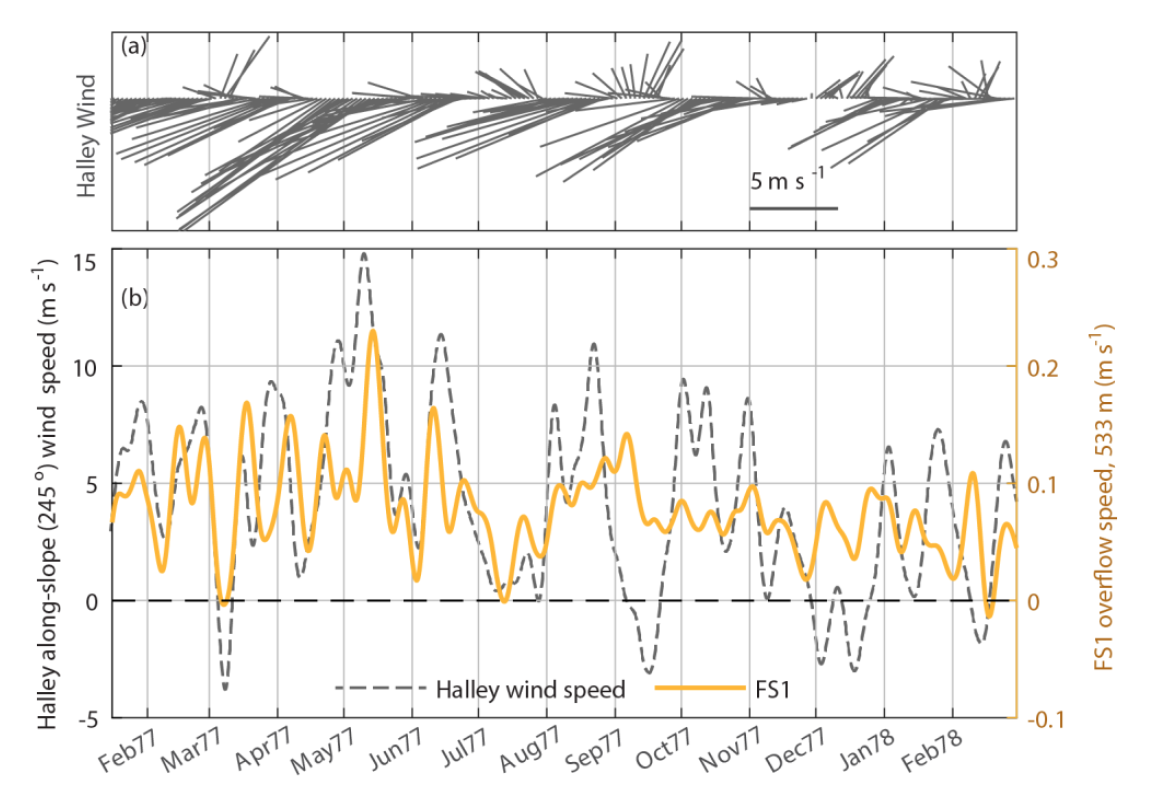By Kjersti Daae
Antarctic bottom water (AABW) fills the bottom layer of the world oceans, and is an important driver of the global thermohaline circulation, which involves the large scale ocean currents. The Weddell Sea is an important site for production of AABW. Here, AABW is formed through mixing between the cold and dense shelf waters and the warmer off-shelf water masses.
The Filchner Trough, situated in the southeastern Weddell Sea (Figure 1), is a key site for exchange of water masses between the Weddell Sea continental shelf and the deep ocean. Cold and dense Ice Shelf Water, emanating from the Filchner Ice Shelf cavity, is transported northward along the Filchner Trough and overflows the Filchner Sill.

At the Filchner Sill, several year-long records of current velocity exist between 1977 and 2017. The records show large fluctuations in the Filchner overflow velocity. However, there is no pronounced seasonal variability, and earlier studies have not been able to figure out which mechanisms contribute to the large fluctuations.
In this study, we compile all available observational records from the Filchner Trough and Sill, and study the monthly scale variability of current velocity, and hydrography (i.e. temperature and salinity). We present new findings of high correlation between the Filchner overflow velocity and the wind forcing along the continental slope, upstream (Figure 2). During periods of strong wind forcing along the slope, the overflow velocity is also high.

An important question arising from these results is: How can the along-slope wind upstream of the Filchner Trough influence the Filchner overflow? We propose that the westward-flowing slope current, associated with an oceanic front across the continental slope is a key to understanding the co-variability of the Filchner overflow and the wind forcing.
In a previous model study (Daae et.al, 2017) we looked at how the slope current responds to changes in the wind forcing. We found that during weak wind forcing, the slope current does not interact with the Filchner Trough, and mainly crosses the Filchner Trough opening (Figure 3a). However, during strong wind forcing, a wind-driven core of the slope current develops further up-slope (red arrow in Figure 3b), and recirculates over the Filchner sill region.
Based on these model results, we propose that interaction between the Filchner overflow and the wind-driven slope current, which recirculates over the Filchner Sill, may enhance the Filchner overflow velocity and thereby offers and explanation to the observed high correlation between the along-slope wind and the overflow velocity. Although the existing data set is insufficient to prove the mechanism, we present measurements at different locations which are consistent with the proposed recirculation of the slope current.
Elin Darelius, one of my co-authors, was part of a team which deployed several moorings across the Filchner sill and the continental slope in 2017. We hope that the data from these moorings, will contribute to increase our understanding of the Filchner overflow variability and the proposed recirculation of the slope current.
Reference
Daae, K.; Darelius, E.; Fer, I.; Østerhus, S.; Ryan, S. (2018): Wind Stress Mediated Variability of the Filchner Trough Overflow, Weddell Sea. Journal of geophysical research, 2018, (0). ISSN: 2169-9275; DOI: 10.1002/2017JC013579
